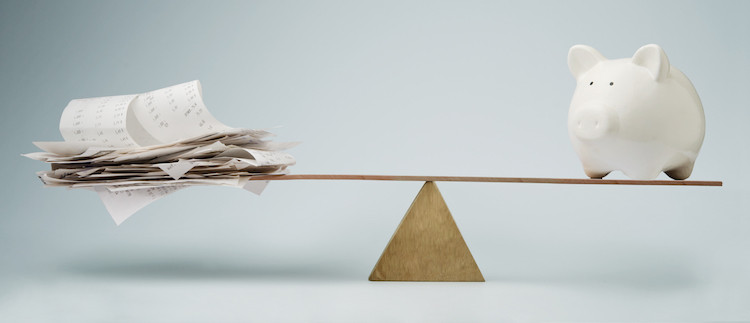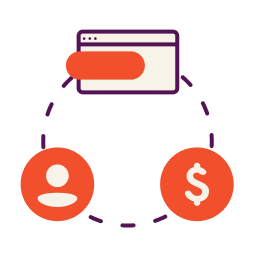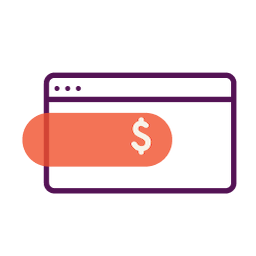After payment history, debt is the second most important factor in your credit reports. When most people think of debt in relation to their credit scores, they probably think in terms of how much they owe. But credit scoring models often look at it somewhat differently.
While the amount you owe is important, even more important is how you are managing your revolving accounts such as credit cards. Here, most credit scores will calculate something called a “debt usage” or “utilization” ratio. To do this, the balance on each of your credit cards or other revolving accounts will be compared to the credit limit on that account. In addition, an overall debt usage ratio will be calculated as well.
What Is a Debt Utilization Ratio?
A debt utilization ratio can apply to an individual or a business. It’s a financial metric that measures the percentage of available revolving credit that you or your business is currently using.
A high ratio may suggest that your business relies heavily on debt financing, which could bring financial risks if not managed effectively. Lenders and investors often assess this ratio along with other financial metrics to evaluate the financial health and risk associated with lending to or investing in a particular business.
Now how to calculate your credit utilization ratio. Let’s use an example and say you have access to a combined $25,000 in a line of credit and business credit cards. If you’re using $5,000 of that available credit, your debt utilization ratio is calculated as:
$5,000 / $25,000 = 0.20
In this case, your debt utilization ratio would be 20%.
Lenders often prefer to see a lower debt utilization ratio since it indicates a more responsible use of credit. Monitoring your business’s debt utilization ratio is important for maintaining its financial health.
How Does Debt Usage or Utilization Affect Credit Scores?
There’s no hard and fast rule about what is a “good” ratio. But it is one of the factors that affect your credit scores and creditworthiness, and the impact in part depends on all the other factors in your credit reports.
FICO says that consumers with the highest scores tend to use less than 10% of their available credit. Credit scoring expert Barry Paperno, who worked at FICO for many years, recommends you keep your debt usage below 20% to 25%. If you do, you’ll probably find this factor doesn’t hurt your scores.
Want to check your debt usage ratio? Sign up for Nav to get it along with monthly credit summaries or reports.
But I Pay In Full!
Paying your balance off in full doesn’t necessarily guarantee a low debt usage ratio. Why not? Because in many cases a balance will be reported before, not after, you make a payment.
In the case of credit cards, for example, many issuers will report your balance at the end of the billing cycle, when they generate the statement. So let’s say your billing cycle for a credit card ends on January 20th. A few days later you get a statement telling you that you owe $495 and you have the option of paying that amount in full or making a minimum payment. Either way you have until February 19th to make your payment. Around that same time, it tells the credit reporting agencies (Equifax, Experian and TransUnion) that you owe $495. It doesn’t matter whether you pay that entire balance off by the due date or not; the balance has been reported and will be used to calculate your utilization.
That may not be a problem if you aren’t using your card heavily, but if you have a relatively low credit limit (say on a retail card or a secured credit card, for example) then a small balance could result in high utilization. Or if you use your credit card to pay for everything you can in order to earn rewards, you could end up with a very high ratio here.
One thing to keep in mind is that most business credit cards do not appear on an owner’s personal credit reports unless they fall behind on payments. (This article explains how the major business credit card issuers report to personal credit.) So a high balance on a business credit card may not impact your personal credit scores, though it could affect your business credit scores. That’s one of the reasons why it is good to have a business credit card that you use strictly for those types of purchases.
High Debt Utilization Signals Risk
High debt utilization in businesses can seem like a credit risk to lenders, mostly due to the increased vulnerability to economic downturns and interest rate fluctuations. A high debt-to-equity ratio indicates that a significant portion of the company’s operations is funded by borrowed capital, potentially leaving it exposed to changes in interest rates and credit market conditions. This amplifies the risks associated with servicing the debt, as higher interest rates can lead to increased interest expenses, ultimately impacting the company’s profitability and cash flow.
Additionally, high debt utilization can constrain a company’s financial flexibility and limit its ability to invest in growth opportunities or withstand unforeseen challenges. In the event of an economic downturn, an increase in business expenses, or a decrease in revenue, businesses with high debt levels may find it challenging to meet their debt obligations, potentially leading to defaults and even bankruptcy.
Moreover, a company’s high debt utilization might signal to investors a lack of sustainable financial management, diminishing investor confidence and potentially resulting in a lower credit rating, which could make it more expensive for the business to access future financing. As a result, businesses with high debt utilization are often viewed as riskier investments in the eyes of creditors and investors.
Paying In Full vs. Utilization
The decision to use credit or pay in full for your business depends on various factors, like your financial situation, cash flow, and strategic goals. Both approaches have their advantages and drawbacks, and the best choice may vary depending on your specific circumstances.
Here’s a comparison of the two approaches:
- Using credit:
- Preserves cash flow: Using credit allows businesses to keep hold of their cash on hand, which can be essential for managing day-to-day operations, investing in growth opportunities, and handling unforeseen expenses.
- Leverage for growth: Borrowing can provide the necessary leverage to fund large investments or expansion plans that might otherwise be unattainable with existing capital.
- Interest costs: However, it’s essential to consider that utilizing credit involves interest costs, which can impact the overall cost of the investment and the business’s profitability.
- Paying in full:
- Avoids interest costs: Paying in full reduces or eliminates interest costs, enabling the business to save money that would have been spent on interest payments.
- Reduces debt utilization: Eliminating the need for debt can reduce the financial risk and potential strain on the business’s cash flow, enhancing financial stability and flexibility.
- Potential opportunity cost: However, paying in full may limit the immediate ability to invest in other growth opportunities or use the cash for other business needs.
Ultimately, the decision should be based on analyzing your business’s financial health, the cost of credit, and the potential return on investment. Businesses should aim for a balanced approach, leveraging credit when it makes strategic sense and ensuring that the debt load remains manageable and lines up with the company’s overall financial goals.
Increase Available Business Credit
Adding new credit to a business often involves improving your business’s overall credit profile. Here are the two most common methods:
Building a strong credit history
To increase available business credit, it’s crucial for small business owners to establish a strong credit history. Help build business credit by avoiding late payments on existing credit accounts, such as loans and lines of credit. Your personal credit history often matters when you’re taking out small business loans as well, so make sure you’re managing your personal finances in addition to your business finances.
Consistently demonstrating responsible credit management and ensuring that you pay all debts on time can help build a positive credit history, which may encourage commercial credit lenders to extend additional credit to your business. Regularly reviewing your business credit reports for any errors or discrepancies and promptly addressing them can also contribute to building a robust business credit history.
Collaborating with vendors and suppliers
Building strong relationships with vendors and suppliers can be the key to increasing available business credit. Requesting trade credit from vendors or suppliers — often called net-30 vendors — and ensuring timely payments for goods and services can establish a positive credit relationship.
As your business develops a track record of on-time payments and reliable transactions, vendors and suppliers may be more inclined to extend favorable credit terms, thereby increasing the overall available credit for your business. Keeping open communication and demonstrating a strong commitment to fulfilling financial obligations can foster trust and potentially lead to an increase in available credit from these partners.
Apply for business credit cards
Business credit cards can be easier to qualify for than other small business funding and are a useful tool for small business owners looking to increase credit. You’ll access more revolving credit through a simple application process. Responsible business card usage can even help build your credit scores. Keep in mind that you’ll usually have to agree to a personal guarantee saying that you’ll pay back the debt if the business fails to do so.
You could also consider adding a personal credit card if you need to increase your consumer credit scores. These can be even easier to qualify for than business credit cards.
Business Credit Scores and Utilization
When it comes to having good business credit scores, debt may be evaluated differently. For one thing, not all debts appear on all credit reports from business credit bureaus. So it’s possible a lender may report to one agency and not another, or may not report at all unless the account is delinquent.
With the D&B Paydex score, payment history is the driver, not debt levels. With other models, debt is a factor, but utilization on revolving accounts is probably not going to have the same impact. (In part, that’s because often the majority of accounts that report are not considered revolving accounts.) However, with scoring models that look at both the owner’s personal credit and business credit information, utilization is a major factor for the personal credit score, and does come into play when the overall score is calculated.
That doesn’t mean debt is overlooked. Experian Small Business Reports, for example, contain fields for the Total Balance Amount (all balances added together) and Recent High Credit (highest balance in the past twelve months with a particular lender or vendor). And some credit managers will still use some form of manual underwriting or custom underwriting, and may look at business debts levels, rather than primarily at utilization.
The Bottom Line
At the end of the day, then, it’s essential to carefully monitor your debt usage ratios on your personal credit reports. On the business side, keep debt levels manageable and your credit file should be fine for this factor. Use Nav Prime to actively manage your business credit reports — and build business credit history at the same time.
This article was originally written on December 8, 2015 and updated on April 23, 2024.




I like to say, your small business advice is great. It helps people to be aware of one errors, these alerts helps one correct their bad habits from not paying on time to paying on time.. Fermin
This makes me wonder what the optimal mix of credit cards, credit limits, and throughout-the-month balances. Perhaps you eventually cross a threshold where it doesn’t matter very much – but I’m curious what that threshold is :).
Hey Rich, I’d say the optimal mix of credit cards depends on how you use your cards. In terms of throughout-the-month balances, as Gerri mentioned above, FICO says that consumers with the highest credit scores tend to use less than 10% of their available credit. It’s could be worthwhile to find out when your credit card issuers report your payments and pay your balance down before that day!